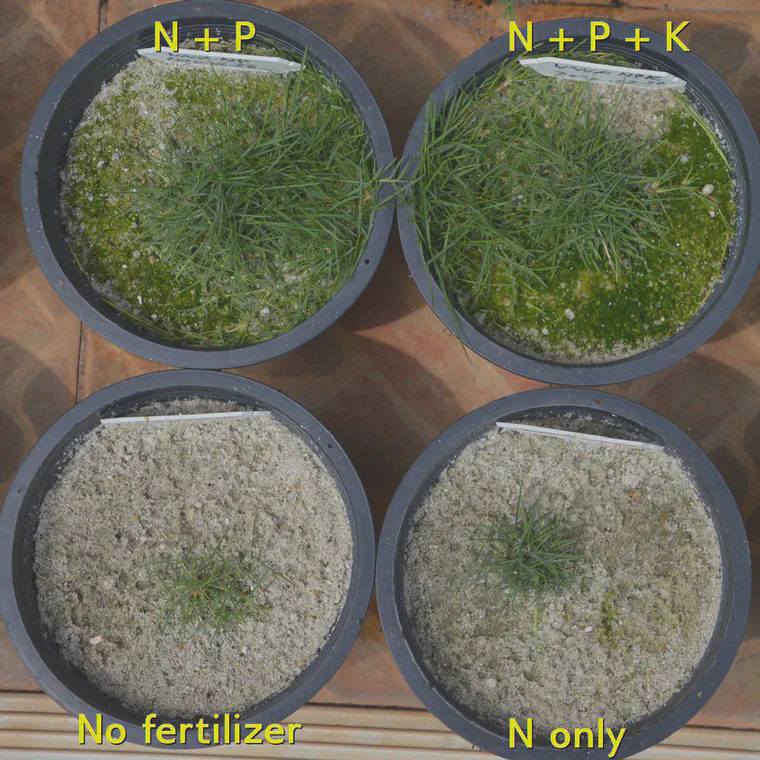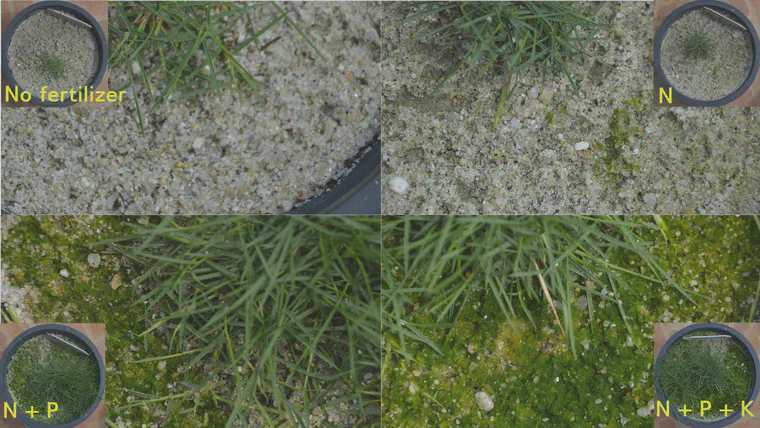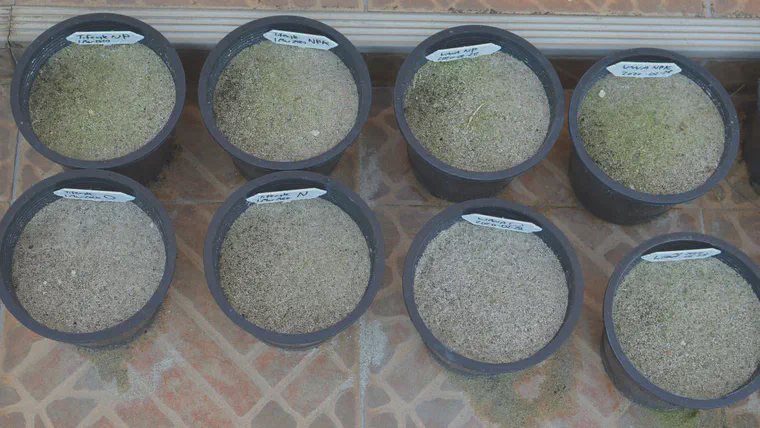Algae, sand, and phosphorus
On February 28, I planted ‘Wana’ manilagrass as two node rhizomes in sand-filled pots. All pots have had irrigation and rainfall. One pot has not been fertilized. One has received only N from urea. Another pot has gotten N and P, from urea and from diammonium phosphate (DAP). The fourth pot has gotten all the macronutrients—N, P, and K—from urea and DAP and potassium chloride (KCl).

It seems there is plenty of K in the sand and in the irrigation water, because the grasses haven’t had much growth response to added K. They definitely respond to P.
And so does the algae.

There was a hint that this would happen less than two weeks after planting.

It’s obvious, by looking at how much the grass has grown in 72 days, that P supplied to this grass in this sand speeds establishment. Once grass is established, however, there are all kinds of reasons not to apply P, such as:
reduce algae risk
reduce pollution risk
reduce Poa annua invasion risk
save money
I’d look at the soil test P, and its change over time, comparing the soil P level to the MLSN guideline and evaluating turfgrass performance, before including any P in a fertilizer to established turf.
For more about this, see:
P deficient bentgrass from Doug Soldat
John Kaminski’s SlideShare about algae, especially slide #28